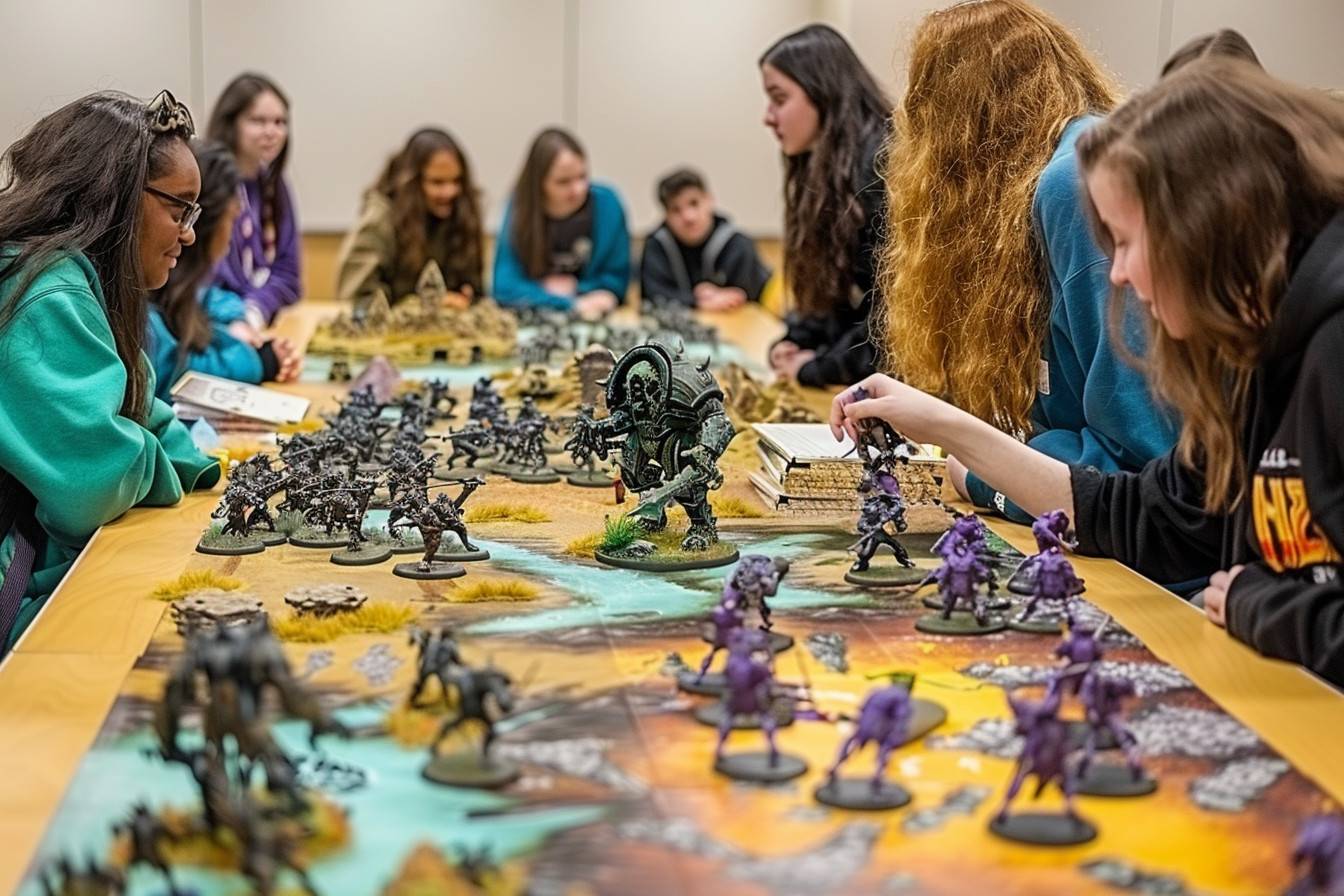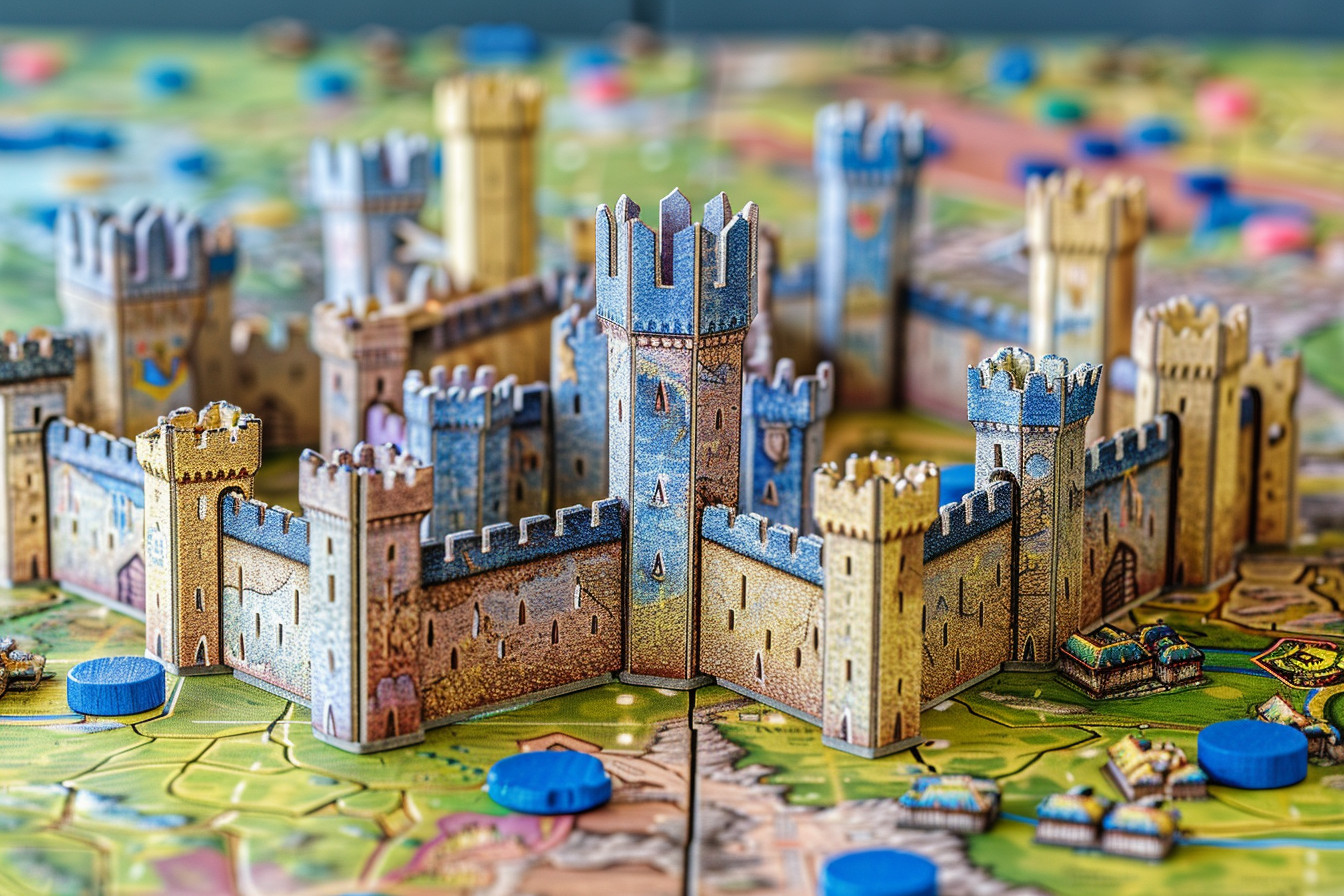Betrayal in the House of Hill is a game that mixes the thrills of classic horror with the excitement of a strategy board game, and it has been a fixture for my game nights. Created by Bruce Glassco and published by Avalon Hill, this game drops players into an eerie adventure where they’re exploring a haunted mansion–uncovering its sinister secrets and ultimately facing a wild turn into something that turns friends against each other. Betrayal in the House of Hill grabbed me from its very first play-through with that eerie atmosphere and gameplay that feels anything but safe. In each game players are entering the setting for a horror movie where anything goes, and often does.
The game is suitable for 3 to 6 players, so it is suitable for small to medium-sized groups. It is a semi-co-operational game, wherein players first have to work together to explore the mansion and gather items; but halfway through the game, the atmosphere changes completely. In a thrilling twist, one of the players is revealed to be a traitor and turns against all those in his team. This shift keeps it fresh for everyone and ensures that no two sessions will ever be exactly alike.
The thematic elements are strong and captivating. From the creaking doors to the ominous flicker of the lanterns every detail adds to the feel of terror. For instance in one particularly memorable game, I was exploring the basement and found a secret laboratory filled with bubbling potions and bizarre devices. As we realised that one of us was covertly plotting our downfall, the tension shot through the roof.
What makes Betrayal at House on the Hill stand out is its replayability. With 50 different haunts, each with its own unique story and tasks, the game offers a new experience every time you play. Whether you’re dealing with vengeful spirits, mad scientists, or otherworldly horrors, the variety keeps the game fresh and exciting.
Setup
Setting up Betrayal at House on the Hill – that is to say, constructing the starting board – is like preparing for an epic horror story. The process is fairly detailed yet simple, establishing in some small way at least what kind of tale will unfold. To set the game board simply place the Entrance Hall tile — the game’s only starting piece — in the center of the table. This tile serves as your entranceway into the not-so-deserted mansion; starting from here, the mansion grows in unpredictable ways.
Each player selects a character from the available choices. These characters come with double-sided cards that offer different stats and backgrounds. This means the game is endlessly variable. In all honesty, power-wise I tend to lean toward Ox Bellows, the burly jock whose brute strength can make all the difference in a physical battle. I remember the one game when he held off a horde of zombies on his own, giving the rest of us precious time to find the hidden exit.
Next, shuffle the three decks, Omen, Event, and Item cards. These cards are the mainstay of the game; they are the ones that move the story along, stirring in new challenges while offering new opportunities. Place these decks face down within easy reach. The sheer anticipation of drawing these cards will add to the excitement; you never know what you’re going to bump into next.
The room tiles for all three floors (screener, ground floor and basement) need to be reshuffled. They should then be placed head down in one or more stacks You will draw these tiles as you explore the mansion, turning over cards to show new rooms and connections. That way, the game map will differ every time you play. It ’s one of the things that makes Haunted House so eminently replayable.
I can remember one game where we found a secret passage between the attic and basement. A furious chase ensued through the house, straight out of a horror film.But keep running total of those four stats: Might, Speed, Knowledge, and Sanity. These stats are continually being modified whether it be from an adventure or some other tests in the game. Keeping a running record on how each of them fares is vital to your chances of winning. Once I thought Sanity was not so important, and I had a terrible vision from which I almost died at a critical stage.Now distribute your player markers and pick who goes first.
In our group, this is often decided by who went most recently to a obnoxious movie. how appropriate–a sort of tip the hat to the character of the game. The set-up may seem a lot, however it ’s a vital to getting right feeling ahead of story and atmosphere Once everything is in place, it ‘s time to begin your breathtaking journey into the unkonwn.
Gameplay
Betrayal at House on the Hill’s gameplay is where it thrives, blending discovery with strategy and storytelling to keep players engaged throughout. As the game starts, players take turns inspecting the mansion. Floor tiles bring more rooms into the mansion’s blueprint and lead to newly opening areas. Every room has a different type of tile, to add curiosity and suspense. While exploring the mansion, you can draw cards that do anything from hinder your progress to give you a leg up. Objects are able to bring powerful benefits, but Issues and Omens can add unforeseen twists.
Cooperation and competition makes an interesting balance in the game. At first, players band together to share information and carve out strategies for making their way through this haunted mansion. But this coalition has a high point of distrust. Everyone knows that betrayal is right around the corner. I remember a game in which all us worked together earnestly to amass powerful treasures, only for one of our number to turn traitor and wield those very same treasures against us. The betrayal was palpable, and it made for an incredibly memorable game.
The forecast market in The Haunt is revealed this is the turning point. When an Omen card is drawn, the player must make a Haunt roll. Should that roll used ends in failure, then Haunt begins. The dynamic of the whole game changes. From now on, one player becomes the traitor, and often receives a set of secret tasks and rules that the other players do not know. This change adds a layer of delight and strategy, as the heroes now have to figure out how to foil the traitor ‘s plans even while the traitor is shooting for its sinister goal.
The Haunts are the biggest thing we have going for Betrayal at House on the Hill. Hundreds and hundreds tick by without waking any gameplay. Every Haunt thus has its own complete story… and objectives. So no two play-throughs are exactly the same.I’ll never forget the time we faced the“The Werewolf” Haunt.
One of our friends slowly turned into a ravenous beast and the suspense and tension were astronomical as we tried to find those much needed silver bullets to finish him off. Combat in Betrayal at House on the Hill is rather simple but has a very direct result. Players and traitor groups (or their minions) can engage in combat when in the same room, rolling dice to determine who wins according to their Might stat.
The simplicity of this setup has made it possible for the game to run at a brisk clip-there’s always new story unfolding in front of you, and nobody gets bogged down in over laboured mechanics. Finally, the game only ends when one side achieves its objectives. It can be a thrilling or a tragic end, depending on which side you’re on. Win or lose, Betrayal at House on the Hill always leaves you with a story to tell, rich in excitement suspense and betrayal of course.
One of the key reasons why Betrayal at House on the Hill has become a modern classic within the board gaming community lies within its excellent theme. The game well captures the spirit of classical horrordrawing players into an environment with haunted houses, unnatural happenings, and things that go bump in the night. Every little detail serves to enhance overall atmosphere -from grim looking scenes painted into every room description asennorate it-so each game session feels like one long odyssey through a horror movie.
Also, an equally important reason for purchasing the games is their replay value. 50 different Haunts, each telling its own story and with distinct objectives, now two games are ever alike. Because of this diversity, players come back for more. They want to explore fresh situations, meet new challenges and continue playing. I played Betrayal at House on the Hill an unnumBered number of times and still find that something will make feel new twists and turns,keep the game alive.
The mix of socialism and capitalism is a major feature of the game. The first phase–during which players are all working together in cooperation–fosters teamwork and friendship. Once the traitor is revealed, an about-face occurs: the game abruptly shifts into competition. This dual-phase mode of play guarantees that you’re always involved in the story. I’ve had games in which alliances were formed and busted to pieces within minutes, leading to moments of great tension and excitement.
Betrayal at House on the Hill has its drawbacks. In game balance is its most notable flaw—because there are so many different Haunts within it, certain scenarios can become unbalanced and unequal, either favoring the traitor or the heroes. This state of affairs is bound to leave players feeling that one side has been unfairly treated.
I remember that game we played, the traitor’s tasks were almost impossible to achieve and so it ended in a rapid, unsatisfying manner. Another shortcoming is that the game relies excessively upon chance. Whether it is in the drawing of room tiles or the throw of dice, luck does play quite the large part in this game. Though this does help to raise tension and the adrenalin level player heartstrings too high at times—-one unwelcome row of sixes or draws can upset all your carefully laid plans. In one game, our strategy was poised carefully on the edge of disaster by just a few bad dice rolls; we felt helpless and useless as anything.
The components, although usually high-quality, have their problems. The plastic clips used to track character stats can be awkward, with a tendency towards slipping too easily from space to space and making it hard to keep an accurate count of the numbers. This is especially maddening when a game is well under way and good stat tracking essential. In such cases, I’ve resorted to using different methods to ensure we keep track of our stats correctly–such as pencil and paper.
The set up and pack away time may also be seen to be a drawback, especially for newcomers to the game.Of course we have outlined the setup steps in great detail. In terms of improvement efforts today, players might still feel this process cumbersome and time-consuming. That makes it an obstacle indeed for those who prefer games that can be enjoyed in just seconds per game.
This elicits the thought that experienced players may have streamlined it, but for those who want a fast-paced game it remains to big consideration. Finally, the rule book may seem a bit big. Particularly if you’re just starting out.In theory these are no different from the situation in normal board games and they’re very clear statements. In practice however, because so much information is being packed into such limited space, it can be mind-boggling for newcomers to grasp it all.
As the result first few games will probably involve constant hunting through rule pertinent finally serve slow play crib-sheets.I found that many times I had to refer to the rulebook during several sessions to clarify specific mechanics or interactions, which interrupts the game.
Final Thoughts
Betrayal at House on the Hill is a game that never fails to excite and entertain. Horror, strategy, and storytelling are combined into a unified package. It’s a new adventure every game, filled with suspense, surprise and the constantly underlying possibility of betrayal.
One of my most memorable games involved a Haunt where I was the traitor. Being directed against my friends while working to achieve my wicked aims, the tension and excitement were amazing. By turning on them, I created an almost tangible atmosphere of betrayal and from it came both periods of hilarious chaos and thrills. Scenes like these are why Betrayal at House on the Hill has become a standout game.
Despite its minor drawbacks, the game’s joys easily outweigh its woes in multiples. A fully themed world, replayable in many ways and dynamic traversal combine to make it an essential part of one’s game list. It’s a game that moves forward with you, deepening its strategic and narrative layers each time you play. Whether you’re a hardcore gamer or just beginning, Betrayal at House on the Hill offers an experience which is both entertaining and fulfilling.
For those who embrace the unexpected aspects of it, Betrayal at House on the Hill offers a profound joy in playing game. It is not only a game that amuses the customers, but also something which makes lasting memories entirely of its own. The mansion is filled with eerie exploration during moments of suspense and anticipation in the confession of (Horror of the House Boards), each level. As can be seen from the above examples Betrayal at House on the Hill is a sign of interest for thematic game story.
A splendid expression combines the classic horrors with player interaction and strategic depth, something that both players can enjoy together or just watch from afar holding your breath. If you are looking for a game that will engage your mind, test your alliances and provide countless hours of pleasure then Betrayal at House on the Hill is the one for you. It is a game that will surely stay in user ‘s memory for years to come.








